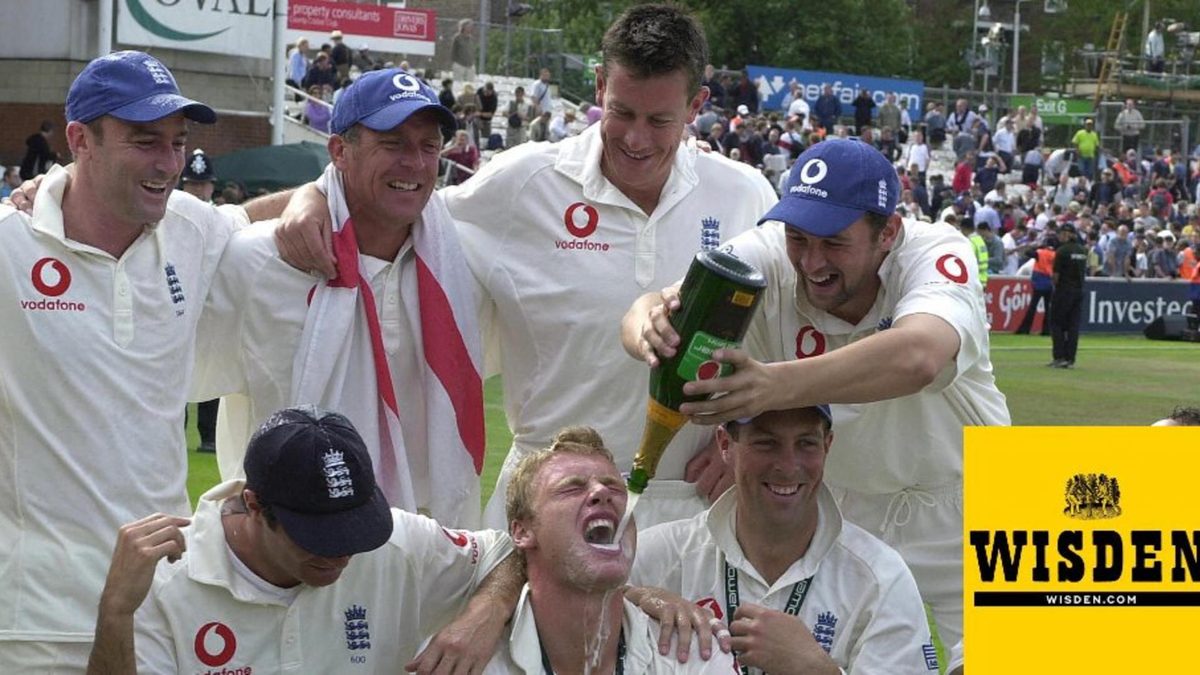
On the latest Wisden Cricket Weekly Podcast, host Yas Rana was joined by Wisden Cricket Monthly magazine editor and editor-in-chief Jo Harman and Phil Walker to pick Wisden’s England Test and ODI teams of the 2000s, as part of the 2000s in Review series.
You can listen to the full episode of the Wisden Cricket Weekly Podcast on the Podcast App or Spotify.
The decade saw several English Test legends start and end their careers, while at its centre stood a team which perhaps didn’t contain many true greats, but had a shared peak to take down Australia in the 2005 Ashes.
[breakout id=”0″][/breakout]
While there were a few areas of contention in the Test side, notably around the third seamer, spinner, and wicketkeeper, much of the team picked itself, with Jo and Phil agreeing on eight of the 11 positions. Here is the XI they came up with:
Stats refer to players’ records between January 1, 2000 and December 31, 2009
Marcus Trescothick
76 matches, 5,825 runs @ 43.79, 14 100s, HS: 219
PW: Trescothick never made an Ashes hundred, good player but never made an Ashes hundred.
JH: If you added another year, taking in the 10-11 Ashes, Cook would have to have been there and you’d have had a very difficult choice between Strauss and Trescothick.
Andrew Strauss
69 matches, 5,367 runs @ 44.35, 18 100s, HS: 177
PW: For two or three years, he was just an unbelievably good opening batsman. He went to South Africa on that tour that really set up the ’05 series and was irresistible out there
Michael Vaughan (c)
80 matches, 5,631 runs @ 42.02, 18 100s, HS: 197
PW: He had a better record as an opener, to be fair, he was irresistible as an opener for a couple of years. In 02/03 on that famous tour in Australia, but also the India series before that. This whole team has a sort of attractive flimsiness to it.
Kevin Pietersen
56 matches, 4,799 runs @ 49.98, 16 100s, HS: 226
Graham Thorpe
43 matches, 3,145 runs @ 53.30, 10 100s, HS: 200*
PW: He’s the most 20th century of my team, if you like. But if you look at his record, he averaged a tick under 54 in this period. And he made some seriously good runs, not easy runs. He made hundreds away in Pakistan, in Sri Lanka on that famous tour when he played Murali as well as Lara did. He made that famous return hundred at The Oval in ’03, was brilliant on the West Indies tour as well in ’04. To have had that run and not played in that ’05 series is a brutally anti-climatic end to a brilliant career. He should’ve played in that series.
Alec Stewart (wk)
40 matches, 2,056 runs @ 36.07, 3 100s, HS: 124*
YR: Stewart played the most Tests as keeper in this decade. He kept in all 40 Tests he played this decade. Prior’s average is inflated by a brilliant record against West Indies, who weren’t great during this period. You take away his West Indies runs, he only averages 29. Stewart averages 39 from nine Tests against Australia. I think we’re hesitant to pick him because he’s associated with the ’90s, but I think it’s very fair to pick Stewart here as the keeper.
Andrew Flintoff
73 matches, 3,645 runs @ 32.83, 5 100s, HS: 167
213 wickets @ 32.94, 3 five-fors, BBI: 5-58
JH: I was looking at Flintoff’s batting record and I assumed his record was better at 6, when he had the chance to be more of a proper batsman. But it’s marginally better at 7, so it’d probably be Stewart at 6, Flintoff at 7.
Ashley Giles
53 matches, 142 wickets @ 40.14, 5 five-wicket hauls, BBI: 5-57
1,404 runs @20.95, 4 50s, HS: 59
PW: I couldn’t have Gough or Caddick or Harmison at 8! Monty had beautiful days, a more attacking and beguiling and effective bowler than Giles, no question about it. But he wasn’t Warne, he wasn’t Murali, he wasn’t Kumble, he was an effective left-arm spinner on his day. In the end, Giles by a nose because he makes that team look like a normal cricket team. Remove Giles and put Monty in there and you have three No.11s and one No.10 batting at 8.
Stephen Harmison
62 matches, 222 wickets @ 31.94, 8 five-wicket hauls, BBI: 7-12
Andrew Caddick
34 matches, 128 wickets @ 30.21, 6 five-wicket hauls, BBI: 7-94
JH: In the West Indies series in 2000, Caddick was untouchable at Lord’s and then famously at Headingley, when he took four wickets in an over. He averaged 37 in the first innings and 21 in the second innings, there’s got to be some kind of reason behind that. In the fourth innings of a Test match, when he comes in to bowl a side out, he averages 17. So you can spin that whichever way you want. You can either say he’s a match-winner who gets the job done at the end or he’s flaky and lets the opposition gets a head-start and the game is hard to pull it back.
Matthew Hoggard
67 matches, 248 wickets @ 30.50, 7 five-wicket hauls, BBI: 7-61
PW: 28 per cent of those dismissals came against batsmen who averaged 45 or over. So this notion that Hoggard was a workhorse and would block an end and run in for you all day, and then the real players get in to work at the other, is not really borne out by the stats.








